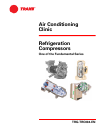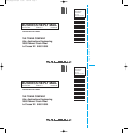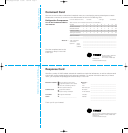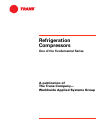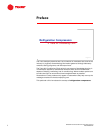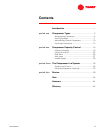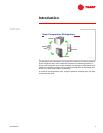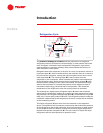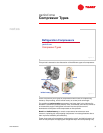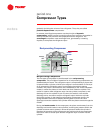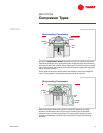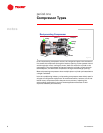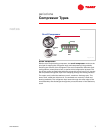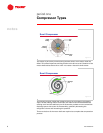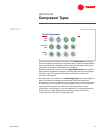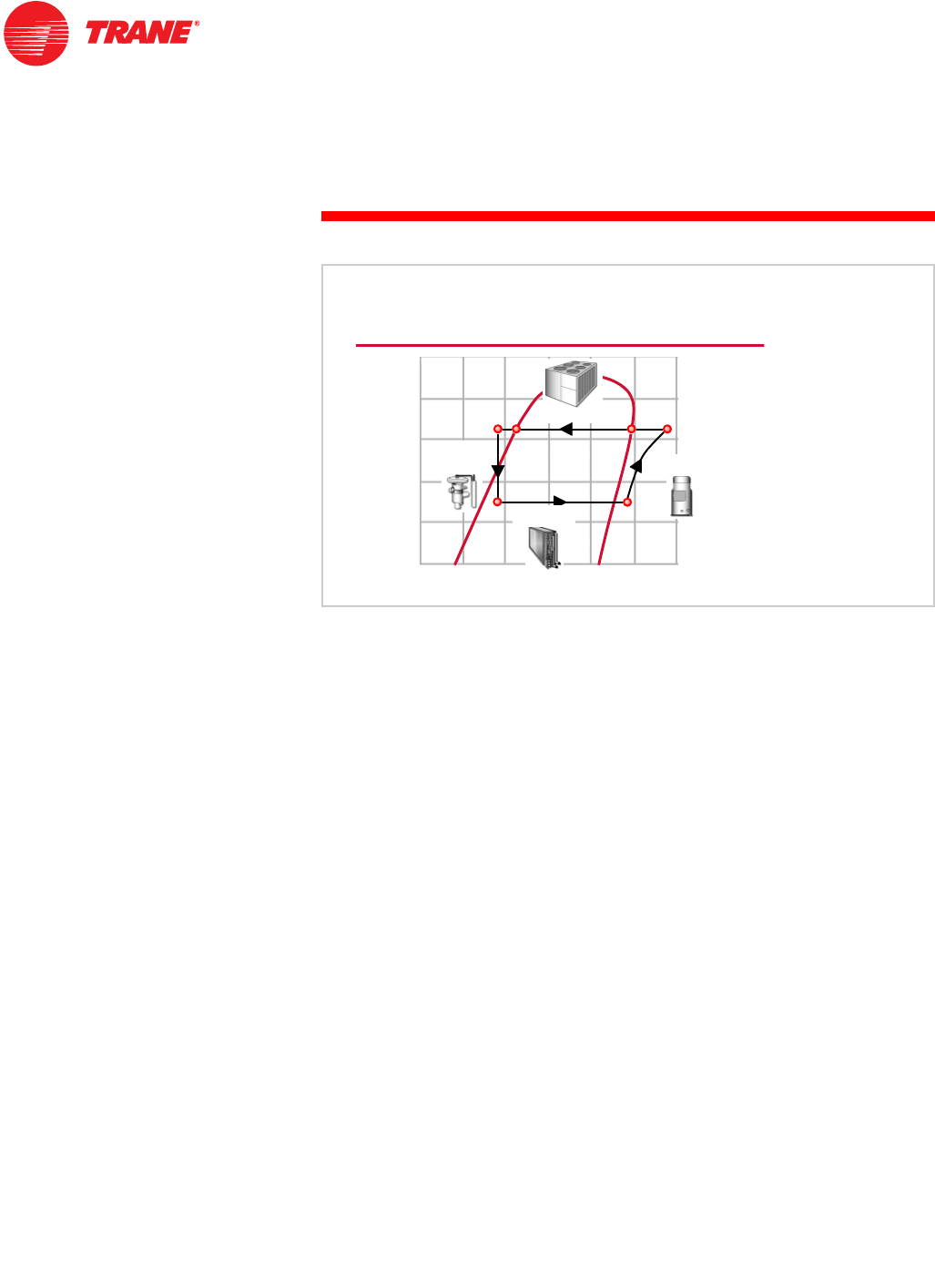
2 TRG-TRC004-EN
notes
Introduction
The pressure–enthalpy (P–h) chart plots the properties of a refrigerant:
refrigerant pressure (vertical axis) versus enthalpy, or heat content (horizontal
axis). A diagram of the basic vapor-compression refrigeration cycle can be
superimposed on a pressure–enthalpy chart to demonstrate the function of
each component in the system.
Refrigerant enters the evaporator in the form of a cool, low-pressure mixture of
liquid and vapor (A). Heat is transferred from the relatively warm air or water to
be cooled to the refrigerant, causing the liquid refrigerant to boil and in some
cases superheat (B). The resulting vapor (B) is then pumped from the
evaporator by the compressor, which increases the pressure and temperature
of the refrigerant vapor. Notice that during the compression process (B to C),
the heat content (enthalpy) of the vapor is increased. The mechanical energy
used by the compressor to increase the pressure of the refrigerant vapor is
converted to heat energy, called the heat of compression. This causes the
temperature of the refrigerant to also rise as the pressure is increased.
The resulting hot, high-pressure refrigerant vapor (C) enters the condenser
where heat is transferred to ambient air or water at a lower temperature. Inside
the condenser, the refrigerant desuperheats (C to D), condenses into a liquid (D
to E), and, in some cases, subcools (E to F). The refrigerant pressure inside the
condenser is determined by the temperature of the air or water that is available
as the condensing media.
This liquid refrigerant (F) then flows from the condenser to the expansion
device. The expansion device creates a pressure drop that reduces the pressure
of the refrigerant to that of the evaporator. At this low pressure, a small portion
of the refrigerant boils (or flashes), cooling the remaining liquid refrigerant to
the desired evaporator temperature (A). The cool mixture of liquid and vapor
refrigerant travels to the evaporator to repeat the cycle.
H[SDQVLRQ
H[SDQVLRQ
GHYLFH
GHYLFH
$
)
FRQGHQVHU
FRQGHQVHU
SUHVVXUH
SUHVVXUH
HQWKDOS\
HQWKDOS\
5HIULJHUDWLRQ&\FOH
%
&
('
HYDSRUDWRU
HYDSRUDWRU
FRPSUHVVRU
FRPSUHVVRU
Figure 3



